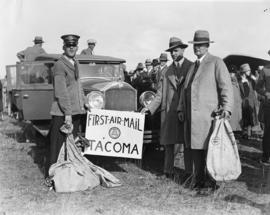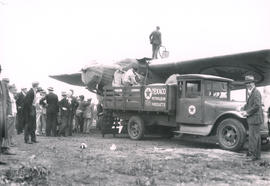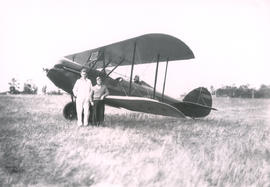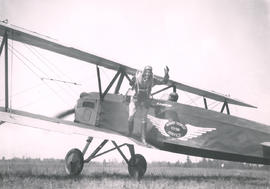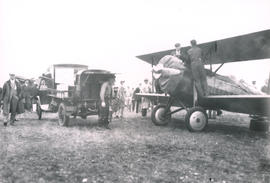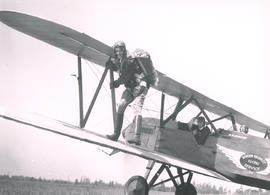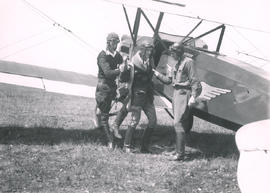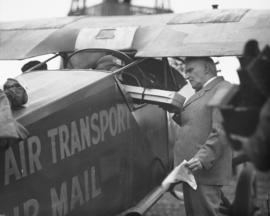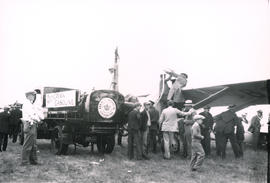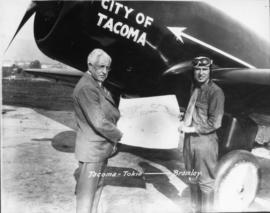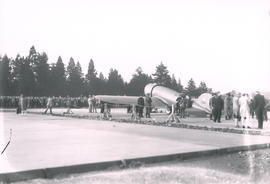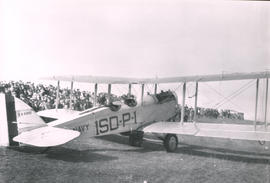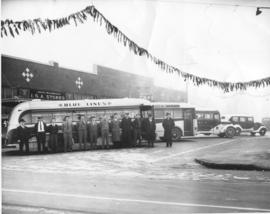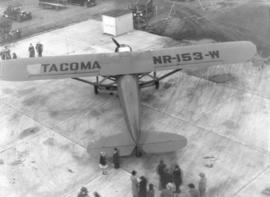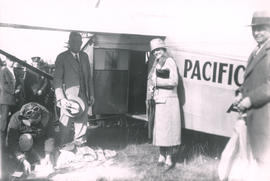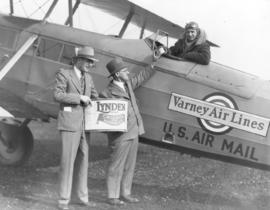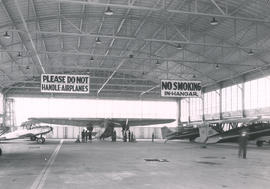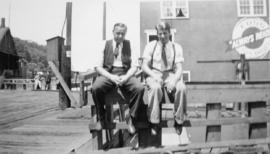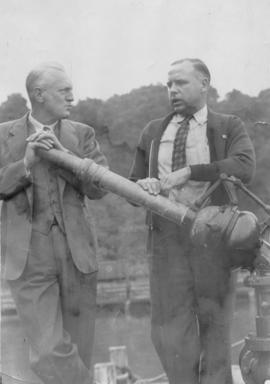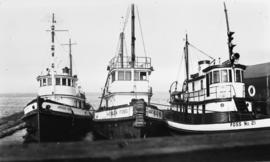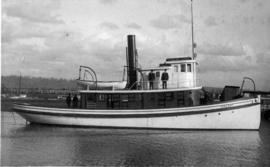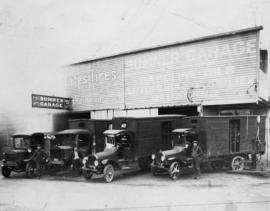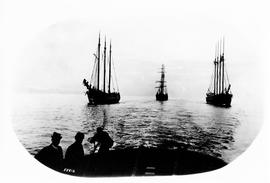- Item
- 1927-09-07
Part of General Photograph Collection
On September 7, 1927, direct airmail and passenger service was inaugurated at Tacoma's Mueller-Harkins airport. After the first bag of air mail arrived, Postmaster Clyde J. Backus, right, turned it over to department employee Alfred Bottiger, left, who carried it to the city by automobile. Pictured in the center is R. A. Mueller. Over 2500 people waited two hours at the airport to cheer the arrival of the first airmail plane of the Pacific Air Transport Co. (TDL 9/8/1927, pg. 1 & pg. 3- picture) (photograph courtesy of Ted Bottiger, Port of Tacoma Commissioner)
Backus, Clyde J.; Bottiger, Alfred; Mueller, Rudolph A.; Mueller-Harkins Airport (Lakewood); Air mail service--Tacoma--1920-1930;
